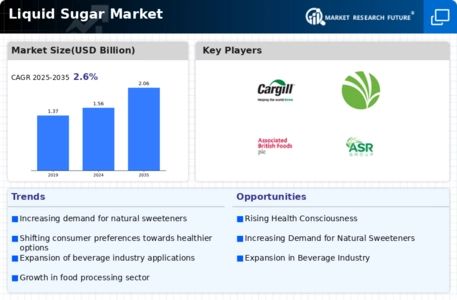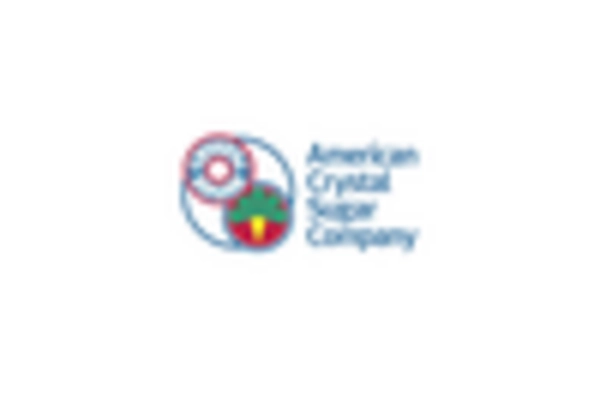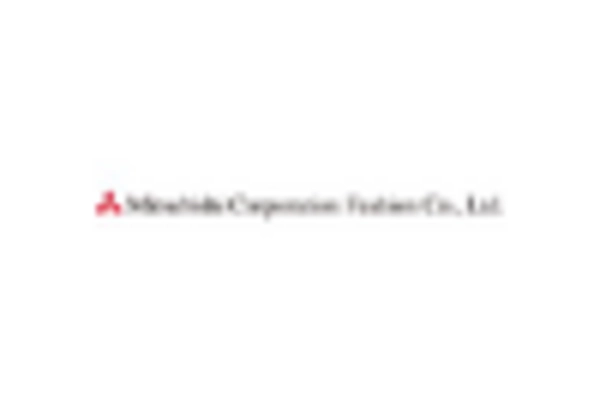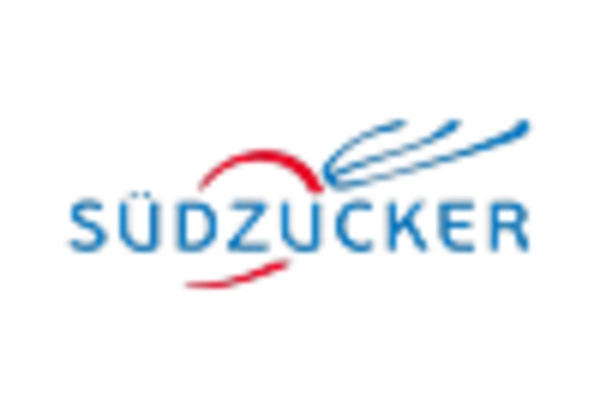Expansion of Beverage Industry
The ongoing expansion of the beverage industry serves as a significant driver for the Liquid Sugar Market. With the rise of new beverage categories, including functional drinks and ready-to-drink options, the demand for liquid sugar is expected to increase. In 2025, the beverage sector is projected to account for approximately 40% of the total liquid sugar consumption, highlighting its critical role in the market. This growth is fueled by changing consumer lifestyles and preferences for convenient, on-the-go products. Additionally, the trend towards low-calorie and low-sugar beverages is prompting manufacturers to explore liquid sugar as a means to enhance flavor without compromising on health. As beverage companies innovate and diversify their product offerings, the Liquid Sugar Market is poised to experience substantial growth, driven by the need for versatile sweetening solutions.
Growth of the Confectionery Sector
The growth of the confectionery sector is a crucial driver for the Liquid Sugar Market. As consumer preferences shift towards indulgent treats and premium confectionery products, the demand for liquid sugar is anticipated to rise. In recent years, the confectionery market has shown a steady growth rate of approximately 4.5%, with liquid sugar playing a vital role in the formulation of candies, chocolates, and baked goods. This trend is further supported by the increasing popularity of artisanal and gourmet products, which often utilize liquid sugar for its unique texture and flavor enhancement properties. As confectionery manufacturers innovate and expand their product lines, the Liquid Sugar Market is likely to benefit from the heightened demand for high-quality sweetening agents that cater to evolving consumer tastes.
Rising Demand for Natural Sweeteners
The increasing consumer preference for natural sweeteners is a pivotal driver in the Liquid Sugar Market. As health-conscious individuals seek alternatives to artificial sweeteners, liquid sugar, derived from natural sources, is gaining traction. This shift is evidenced by a reported increase in sales of natural sweeteners, which is projected to grow at a compound annual growth rate of 5.2% over the next five years. The Liquid Sugar Market is likely to benefit from this trend, as manufacturers adapt their product lines to meet consumer demands for healthier options. Furthermore, the rise of organic and non-GMO products is influencing purchasing decisions, leading to a broader acceptance of liquid sugar as a viable ingredient in various food and beverage applications. This trend suggests a potential expansion of market opportunities for producers who align their offerings with consumer preferences.
Innovations in Food Processing Techniques
Innovations in food processing techniques are transforming the Liquid Sugar Market. Advances in extraction and purification methods are enabling manufacturers to produce higher-quality liquid sugar with improved flavor profiles and functional properties. For instance, the introduction of enzymatic processes has enhanced the efficiency of sugar extraction from raw materials, leading to cost reductions and increased production capacity. This technological evolution is expected to drive market growth, as food manufacturers seek to optimize their formulations and meet consumer demands for quality. Moreover, the integration of automation and smart technologies in production lines is likely to streamline operations, further enhancing the competitiveness of liquid sugar in the market. As these innovations continue to unfold, the Liquid Sugar Market may witness a shift towards more sustainable and efficient production practices.
Regulatory Support for Sugar Alternatives
Regulatory support for sugar alternatives is emerging as a significant driver in the Liquid Sugar Market. Governments and health organizations are increasingly promoting the use of natural sweeteners as part of public health initiatives aimed at reducing sugar consumption. This regulatory landscape is encouraging food and beverage manufacturers to reformulate their products, incorporating liquid sugar as a healthier alternative. In many regions, policies aimed at reducing sugar intake are influencing consumer behavior, leading to a greater acceptance of liquid sugar in various applications. As regulations evolve, the Liquid Sugar Market may experience a shift towards more innovative product offerings that align with health guidelines, potentially expanding market opportunities for producers who adapt to these changes.


















Leave a Comment